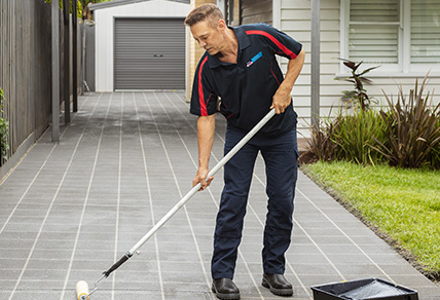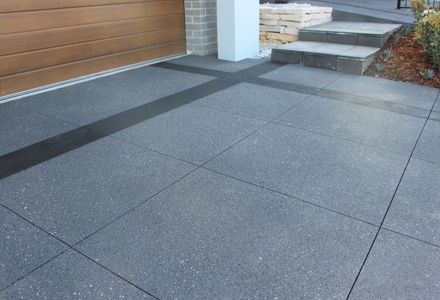How to repair concrete cracks with Dulux Avista
Concrete cracks of any size are never a welcome sight. Crumbles, splits and cracking make your hardscaping look tired and messy, but worse than that, they’re often an indication of more serious issues underneath.
Why does concrete crack?
Some cracks happen not long after pouring, when the mix cures and settles in to place. They can also be caused by uneven ground under the slab, thermal expansion, shrinkage, humidity or a combination of factors. Whether they’re hairline cracks or gaping splits that go through to the ground below, they all have one thing in common - they only get bigger over time.
Stop cracks in their tracks
Cracks in concrete driveways allow water to seep upwards from the ground below. This hydrostatic pressure causes weakness in the surrounding concrete and can swell and shift the soil underneath. As they expand further, cracks let weeds grow through and become a trip hazard. Acting early helps avoid these issues, as well as bigger hassles and expense down the line.
Dulux Avista Concrete Crack Repair Kit to the rescue
The Dulux Avista Concrete Crack Repair Kit is a two-component, low viscosity epoxy resin system that's mixed with fine sand to produce a mortar ideal for concrete crack repair. Pot life is 20 minutes, so it's important to only mix the quantity you need.
"Simply mix in the sand, then grind and fill the crack with a trowel to even it off. The sand provides grit that hangs on to the edges of the crack, forming a strong bond," explains Dulux Avista Technical and Training Manager, Chris Murphy. "Being an epoxy, you'll get a nice seal with no shrinkage."
Driveway glow up
Dulux Avista Accredited Applicators, Spray on Transformations, completed a flawless concrete repair and resurface on this badly cracked driveway. Here’s how they achieved the sleek new finish:
- Step 1: The existing sealer was removed and cracks chased with an angle grinder fitted with a V-segment blade.
- Step 2: After a pressure clean and acid wash, the surface was dried before the Dulux Avista Concrete Crack Repair Kit mortar filled the cracks to restore concrete strength and integrity. Any excess mortar was ground flat once cured.
- Step 3: A shake of dry sand over the repairs created a coarse key for overcoating.
- Step 4: The Dulux Avista Resurfacing System was used for driveway resurfacing, with the owner choosing a Bluestone base with flecks in Black and Silver Sands. What a makeover!


Patch Fill vs Crack Fill - the important difference
Dulux Avista's Concrete Crack Repair kit is the ideal formulation for concrete crack repair. If you need to fill potholes or low points in the concrete surface, you need to use Dulux Avista's Concrete Patch Repair Compound. Available in 0-10mm or 3-40mm, this ready-to-use blend of dry powders only requires the addition of water on site to produce a highly consistent mortar that can be built up to create an even surface. It will rapidly gain strength, and can handle pedestrian traffic in just 16 hours.
Find out more
Dulux Avista concrete repair products should be applied by professional applicators. Through Dulux Avista’s Accredited Applicator program, we can help find a local trained applicator who can repair concrete cracks at your place.
Note - While the Dulux Avista Concrete Crack Repair Kit represents the latest advancements in crack repair technology, some movements or expansions in concrete substrates can cause cracks to re-appear over time.





